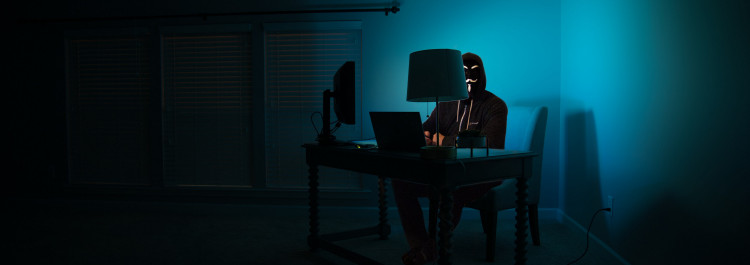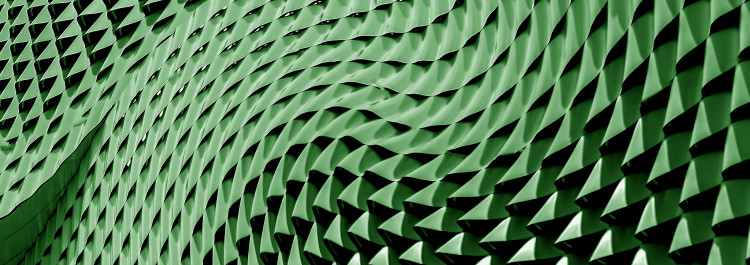You want to turn your classroom into an active learning environment – one where students understand, construct and apply knowledge, analyze, evaluate and create, instead of an environment where they spend most of their time listening – but you’re apprehensive and unsure? What does the process of change look like? How can you find the support and tools you need? What can you expect?
Dawson physics professor Chris Whittaker made the change himself and he’s watched as a handful of his colleagues have followed suit. What’s more, he’s seen a thriving community of practice grow out of it all and he is convinced that it can happen in different institutions and across a variety of levels – colleges and universities included.
Chris likens the process of his own change to a curved step – or in mathematical terms, a sigmoid function.
At first, change is gradual and tentative, but then a critical threshold is reached and the rate of change accelerates, feeding upon itself until it evens out. At the very beginning, he vividly recalls an instance when he was on the hiring committee for the Department of Physics and the Dean of pre-university studies at the time asked the candidate a seemingly innocent question: “what makes a good teacher?” The interviewee responded in typical fashion, running the gamut of orthodox answers: prepares clear notes, delivers material clearly, assigns appropriate homework, does problems in class etc. The Dean however, wasn’t satisfied, and demanded that the interviewee provide evidence that traditional classroom pedagogy works. The interviewee had none and instead resorted to personal and anecdotal answers to which the Dean responded by asking if the interviewee thought that such an unscientific response would hold water in his field of scientific expertise. The answer, of course, was “no” and the poor candidate was left to squirm in his seat as the Dean lectured him about applying the scientific method to teaching. The experience left Chris to wonder about his own pedagogical approach and its root in scientific fact. He began to reflect on his own question: “How do we know what works best in the classroom?”
With the seed of curiosity sown, Chris began digging and exploring. In the literature he found a thriving community or researchers and teachers active in Physics Education Research (PER) and closer to home he found peers who were asking the same kinds of questions he was. Early on in the process he discovered that several robust measures – most notably the Force Concept Inventory, commonly referred to as the FCI – had shown that conceptual understanding in introductory college and university level physics increased minimally with traditional teaching methods. The normalized conceptual gains, measured as the change between one’s initial and final conceptual understanding divided by the total possible change, produced by traditional “chalk and talk” teaching were small (from 20%-30%) no matter how much the students liked the teacher or thought s/he was a good teacher. What’s more, even the students who did well on the final exam often failed to pass the FCI at the end of the course. The clincher came when the data showed that active learning pedagogies – even simple ones like Peer Instruction by Eric Mazur at Harvard University – were clearly showing increases in conceptual learning that almost doubled the FCI gains of traditional approaches.
Chris may have been convinced, but some of his peers we hesitant – after all, some of them had been teaching for many years and it seemed to them that what they were doing was working. When he pushed there was resistance, even resentment. So, he switched gears and focused on his own teaching. He started incorporating limited active learning strategies into his teaching and almost right away he began to see improved conceptual gains in his students.
As the data began to show that active learning was working, skepticism from those around him shifted to other areas: was he able to cover the same content, did his students have to do more, or did his students still do as well at traditional problem solving? Initially, he admits there were bumps in the road and his student’s ability to problem solve seemed to take a dip, but after he learned how to focus and target his activities more carefully that quickly changed. Now, he spends less than a quarter of the time he used to on problem solving or lecturing and he reports that his students consistently achieve conceptual gains consistent with active learning environments reported elsewhere in the research literature and his students do as well or better than their peers on all evaluative measures, including the final exam.
With his feet firmly planted in the Active Learning camp, Chris began to notice limitations in the design and functionality of the traditional classroom. He wanted a classroom where he could match active learning approaches with spaces that maximized the affordances of this pedagogical approach. As with active learning itself, it didn’t take long to discover that wheel had already been invented and he convinced his colleagues to go on the road to visit other institutions where classroom design was based on active learning principles. He organized a trip for a handful of faculty to places such as M.I.T., Harvard, and Dickinson College to see their room designs. The standard layout of blackboard in front, rows of students neatly lined up behind, would no longer do.

He came back and pitched the idea of changing the laboratory designs in the physics department so that both traditional and active learning pedagogies would be easier. In the end, two out of four teaching labs were renovated so that students in these new rooms could sit in small groups – facing each other instead of facing the teacher.

Importantly, the table arrangements were flexible so that the tables could be changed back in to standard rows facing the “front” so it became a win-win situation: “We let the traditionalists know they had nothing to lose, and those who wanted to use active learning strategies had something to gain,” he says.
As all this change was happening at a local level, Chris was also engaging with a broader community of teachers and researchers in the academic community. He joined the American Association of Physics Teachers (AAPT) and became the section representative for the provincial chapter (QcAPT). He also began attending Physics Education Research (PER) conferences, but most importantly perhaps, he also began to collaborate on research projects with colleagues such as Dr. Elizabeth Charles. In a research environment he found a perfect opportunity to match theory with practice but doing so was difficult at times. He describes himself as taking a step back before going forward: “It took some time to work out the balance of teaching theory and teaching practice in the classroom.” Eventually, however, he hit his stride.
His approach to active learning now rests upon several pillars:
- Modeling involves demonstrating a task or the application of theory for students. Much like a runway model will try something on to show how it might look, a teacher can be a model for a procedure, analysis or the solution to a problem.
- Scaffolding is the process of aiding and supporting students – or providing them with appropriate tools that help as they build their understanding. Like the word suggests, it is important that these scaffolds be removable as the learner’s skill level increases.
- Coaching is the individualized feedback, encouragement, and communication between teacher and student regarding the student’s progress and problem-solving techniques.
- Orchestrating is the process of arranging a series of meaningful and sharply focused activities to maximize student learning. As with any good conductor, the sum of the notes becomes more than noise, it becomes a rich collection of harmonies and rhythms that relies on the skill and expertise of the orchestra leader to come together.
- Collaborative Learning. Students construct knowledge effectively in a supportive social environment where they can collaboratively work with peers and where taking risks is OK. They can develop a deep and meaningful understanding when they work, argue, explore and create collaboratively.
He’s a long way from where he started. He’s come a long way from a vague understanding of active learning and a (limited) bag of tricks – like Peer Instruction. His classroom is completely different than it was. Long-gone is the lecturing without-end and in its place students do the thinking, processing and learning.


But he didn’t do it in a vacuum he had help and some of his colleagues were watching. Indeed, some began to take their own steps up that logistic slope. In time, a handful of his colleagues – not only in physics but also in other sciences – began to explore and embrace active learning. As their interest grew, so too did the demand for classrooms specifically designed for active learning. Armed with a better understanding of theory and practice and with a broad community of teachers who wanted to use such a space, Chris spearheaded the design of an Active Learning Classroom (ALC) for general use that was inaugurated in January of 2012.

This new collaborative active learning environment was similar to the re-designed physics labs but went above and beyond by putting interactive technology into the hands of student groups. In this room, each student table has a dedicated SMART Board that allows for learning activities that are rich, transferrable and that can make full advantage of 21st Century technology.
Today, the designs for yet another Active Learning Classroom (ALC) are being finalized and a diverse group of about twenty teachers from a broad spectrum of disciplines meets weekly to share active learning resources, strategies, expertise and experience. Chris notes that both the development of classrooms and a dynamic community of practice has brought things full circle – they are inspiring him to do and learn more.

So take heart, fellow teachers. It may seem like you’re fighting a lonely uphill battle against firmly entrenched ideas, but with some patience, diligence, and subtleness, you’ll be surprised how quickly the change comes.




